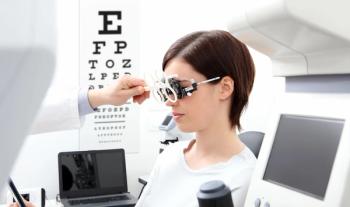
Posterior cortical atrophy study highlights importance of Alzheimer disease biomarker testing
The exploratory descriptive study cites that posterior cortical atrophy may be the most significant clinical indicator for Alzheimer disease.
A new international exploratory descriptive study strongly reinforces the connection drawn between Alzheimer disease and posterior cortical atrophy (PCA).
First author Marianne Chapleau, PhD, and a team of investigators found that previous, smaller studies indicating that PCA typically presents as a pure, early onset dementia syndrome that strongly correlates with underlying Alzheimer disease pathology were correct. Additionally, the study reconfirms findings such as women being more at risk for developing PCA.1
The investigators used PubMed to identify research centers to then request individual participant data. Of the 55 research centers found, 36 centers in 16 countries were evaluated, totaling 1,092 individuals. Of the participants, 80% presented with PCA pure, those with the main clinical and neuroimaging features of the syndrome, and 20% presenting with PCA plus, which includes features suggestive of other neurodegenerative diseases, like Lewy body disease.1
“This study is—to our knowledge—the first to systematically analyze and report clinical, biomarker, and neuropathological data from a large sample of people with posterior cortical atrophy from multiple research centers around the world,” the authors stated.
Those with a clinical diagnosis of PCA and presented Alzheimer disease biomarkers or diagnosed at autopsy were qualified for participation. As defined by the investigators, a vast majority of participants were defined as “amyloid-positive participants,” or those who received a positive result on contrast sensitivity functions (CSF) analysis or amyloid-positron emission tomography (PET). Those with PCA that were not defined as amyloid-positive were diagnosed under their center’s specific procedures. Research centers also used their own specific criteria for defining biomarkers as positive or negative, with some biomarker variables including amyloid β in CSF, phosphorylated tau (p-tau) in CSF, amyloid-PET, tau-PET, MRI showing predominant posterior atrophy, [18F]FDG-PET showing predominant posterior hypometabolism, and dopamine transporter (DaT)-SPECT showing nigrostriatal loss, among others.1
“Importantly, amyloid biomarkers were positive in more than 89% of individuals, and Alzheimer [disease] was the primary diagnosis in 94% of individuals with data from autopsy (145 participants from 13 centers), indicating that the posterior cortical atrophy clinical syndrome is usually caused by underlying Alzheimer disease neuropathology,” the authors noted.
Additionally, the investigators found only 10 participants that were diagnosed with PCA and a primary neuropathological diagnosis that was not Alzheimer disease. “Therefore, posterior cortical atrophy might be the most predictive clinical syndrome for underlying Alzheimer disease,” they said.
The mean age at symptom onset was about 59 years of age, while the mean age for the first diagnostic visit was 63 years of age. At the first diagnostic visit, constructional dyspraxia was the most reported core posterior cortical atrophy clinical feature, at 61% of participants. Space perception deficit, simultagnosia, and acalculia were also present in almost half of participants. Additionally, nearly half of participants experienced impaired anterograde memory, 40% with impaired executive functions, 33% with impaired behavior, and 32% with impaired non-visual language and speech.1
“People with posterior cortical atrophy often face a delay in diagnosis because of their young age and visual-predominant symptoms,” the authors stated. “Better awareness of the syndrome of posterior cortical atrophy among neurologists, primary care providers, optometrists, and ophthalmologists is needed for early detection and treatment.”
In conclusion, the investigators emphasized the important of testing for Alzheimer disease biomarkers in part of the diagnostic assessment of those experiencing PCA.
Reference
Chapleau M, La Joie R, Yong K, et al. Demographic, clinical, biomarker, and neuropathological correlates of posterior cortical atrophy: an international cohort study and individual participant data meta-analysis. Lancet Neurol. 2024 Feb;23(2):168-177. doi: 10.1016/S1474-4422(23)00414-3. PMID: 38267189.
Newsletter
Want more insights like this? Subscribe to Optometry Times and get clinical pearls and practice tips delivered straight to your inbox.
















































.png)


